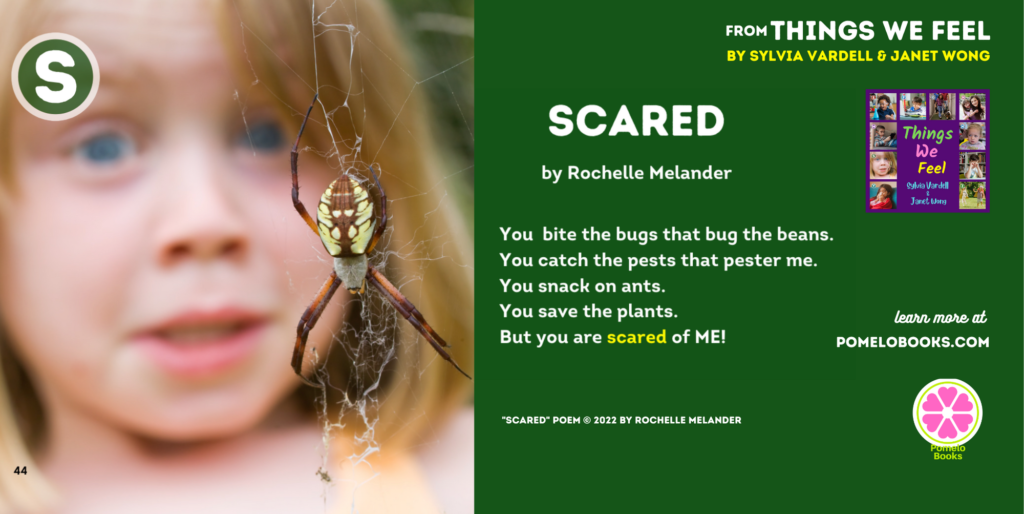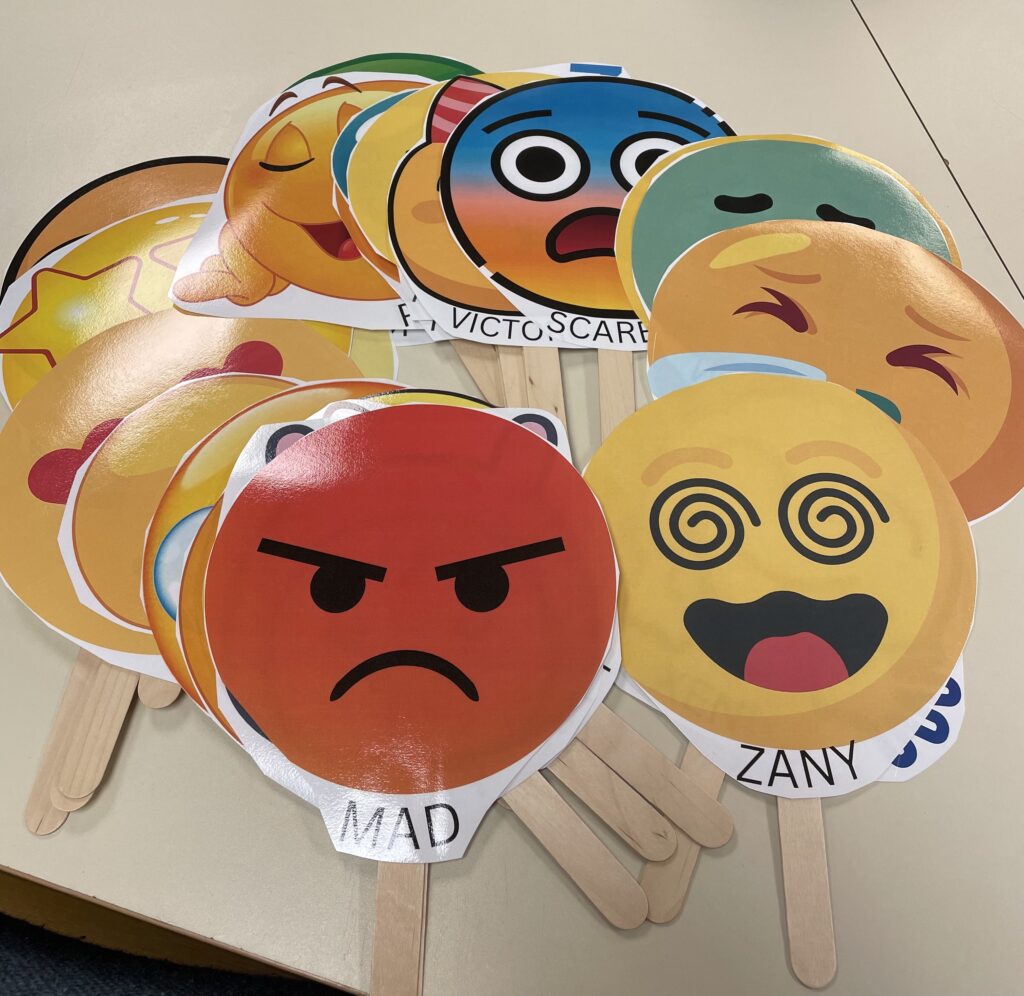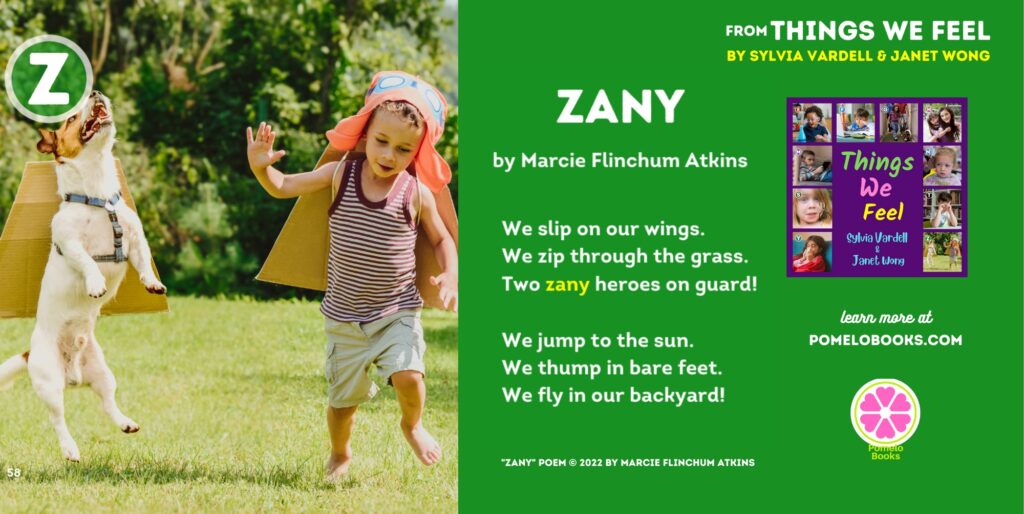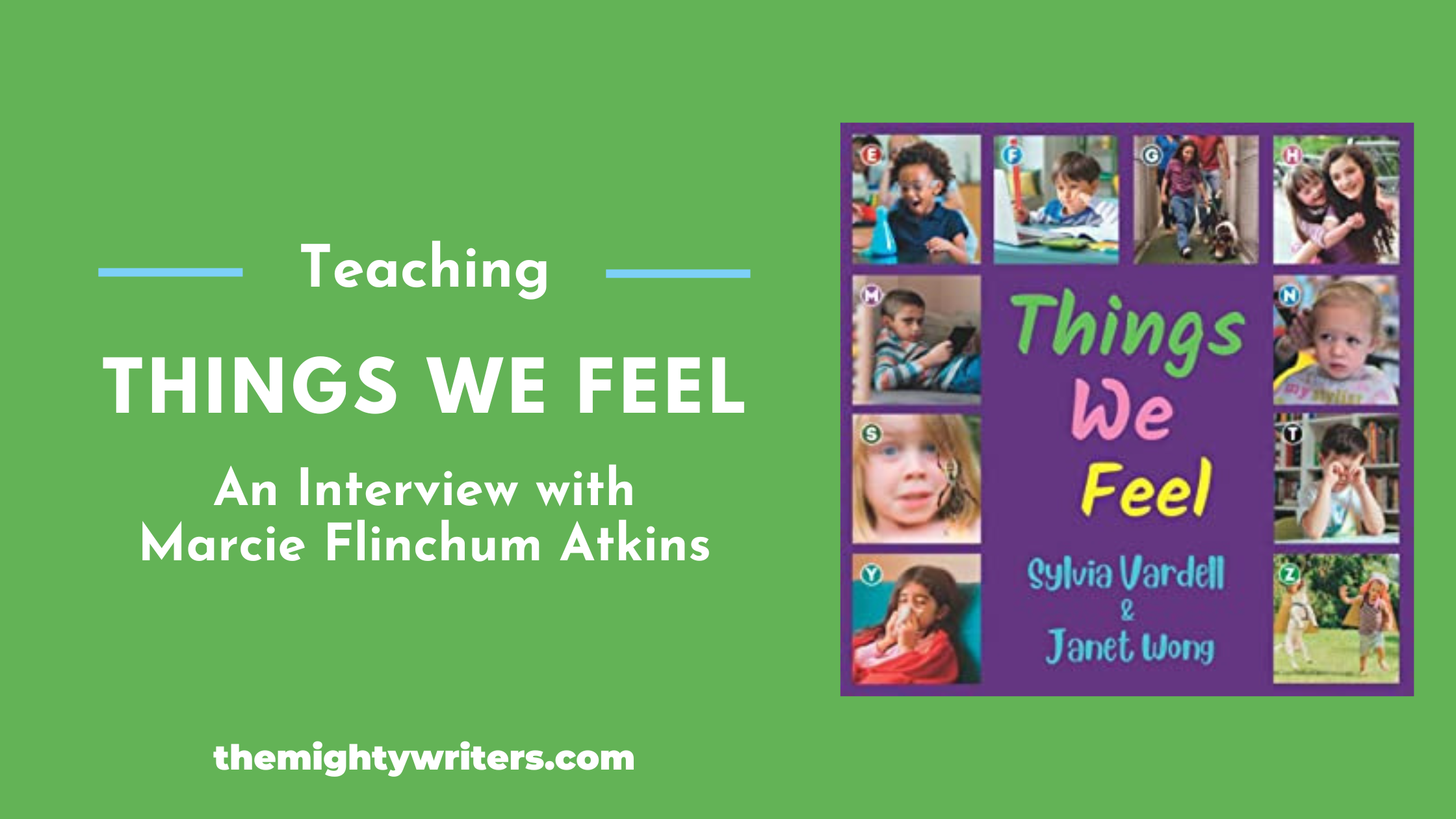A Note to The Reader
Happy Poetry Month!
I love poetry. When I started my Dream Keepers Writing Workshop, I found that poetry was the perfect way to connect with students. We met once a week at the library. We didn’t meet frequently enough to sustain reading long novels. Even short stories took up most of our time together. But poetry! With poetry, we could read and write and read and write some more.
Today, Marcie Flinchum Atkins joins us to talk about teaching poetry–and especially using poetry to talk about feelings. I’m delighted to say, I also have a poem in this book–and have loved using this book with classrooms!

And this is perfect timing. Not only is it National Poetry Month, we just learned that THINGS WE FEEL is on the 2023-24 KSLA Keystone to Reading Preschool list! Here’s where you can grab that list: KEYSTONE LIST.
Enjoy!
Rochelle
Teaching Things We Feel
An interview with Marcie Flinchum Atkins
Tell us about you and the book, THINGS WE FEEL.
I always loved teaching poetry to students when I was in the classroom. Since moving to the library eight years ago, poetry is still one of my favorite things to share with students. My sweet spot has always been sharing and writing poetry with upper elementary students. But recently, I had a poem published in an anthology for preschool and early elementary called THINGS WE FEEL. This gave me a door to sharing very young poetry with kids.
THINGS WE FEEL is edited by Sylvia Vardell and Janet Wong (Pomelo Books, 2022). The poems are all ekphrastic poems inspired by photos. Each poem focuses on a different emotion and is perfect for tying Social Emotional Learning (SEL) into a poetry activity.
How might a teacher or librarian use your book in the classroom?
Limited time is a big consideration when planning for library lessons. Typically, I have 30 minutes with kindergarten students. That includes all transitions and checking out books. It leaves about 15 minutes for a lesson. THINGS WE FEEL can be adapted for any amount of time you have—from 2 minutes to 20 minutes.
Can you share an exercise or activity that teachers can do with students after they’ve read your book?
THINGS WE FEEL is the perfect collection to have students connect to how poetry makes them feel. I collected emojis on Canva for each emotion represented in the book. Then I laminated them and put them on large popsicle sticks.

When I shared this book with kindergarten, I didn’t read it from beginning to end. I let students choose an emoji to hold. Then I read the poem that corresponded with the emoji. If a student has experienced that emotion, they could use the sign for “connection.” We read as many poems as time allowed. Each class I saw picked different emojis.
This would also be a fun activity to do in the classroom for a daily poetry break. During the poetry break a different kid could pick an emoji and the teacher could read the corresponding poem.
For emojis and detailed lesson plans, download it here.
I was honored to have my poem “Zany” appear in the THINGS WE FEEL anthology.

[You can watch a YouTube Video of Marcie reading Zany: https://youtu.be/wRp7QPy-zZ4 ]
What books pair well with your book?
Other poetry books that pair well with THINGS WE FEEL:
THINGS WE WEAR
THINGS WE EAT
THINGS WE DO
All are edited by Janet Wong and Sylvia Vardell.
These poetry anthologies are perfect for the preschool-primary classroom.
I would love to do know how you take poetry breaks in the classroom!
Other Poetry Links:
- Sign up to receive an occasional poetry postcard in the mail for you or your classroom.
- Poetry printables you can print and use in your classroom.
- Poetry Videos you can use in your classroom.
 About the author: Marcie Flinchum Atkins has spent over 25 years in the elementary classroom and library. She is currently a public school elementary librarian in the outskirts of Washington, DC. Marcie holds an M.A. and M.F.A. in Children’s Literature from Hollins University. She is the author of Ancient China (ABDO, 2015), “Rookie Get Ready to Code” series (Scholastic Children’s Press, 2019), Wait, Rest, Pause: Dormancy in Nature (Millbrook Press, 2019), and is a contributor to Things We Feel and What is a Friend? edited by Sylvia Vardell and Janet Wong (Pomelo Books, 2022). You can find her online at: www.marcieatkins.com, Twitter and Instagram: @MarcieFAtkins.
About the author: Marcie Flinchum Atkins has spent over 25 years in the elementary classroom and library. She is currently a public school elementary librarian in the outskirts of Washington, DC. Marcie holds an M.A. and M.F.A. in Children’s Literature from Hollins University. She is the author of Ancient China (ABDO, 2015), “Rookie Get Ready to Code” series (Scholastic Children’s Press, 2019), Wait, Rest, Pause: Dormancy in Nature (Millbrook Press, 2019), and is a contributor to Things We Feel and What is a Friend? edited by Sylvia Vardell and Janet Wong (Pomelo Books, 2022). You can find her online at: www.marcieatkins.com, Twitter and Instagram: @MarcieFAtkins.


